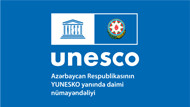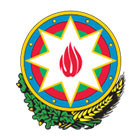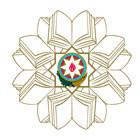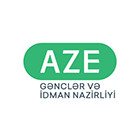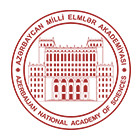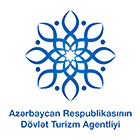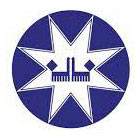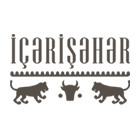Cultural landscape of Khinalig and “Köç Yolu” Transhumance Route
Brief Information about the Property “Cultural Lanscape of Khinalig and “Köç Yolu” transhumance Route” located in Azerbaijan, comprises the high-mountain village of Khinalig and highlands summer pastures (yaylaqs) at North part of the country, winter pastures (qishlaqs) in the lowland plains in central Azerbaijan, and the 200-km long vertical “Köç Yolu” seasonal migration route in between. The village of Khinalig is home to a unique semi-nomadic ethnic group–the Khinalig, whose main occupation is livestock breeding between the summer and winter pastures. The nominated property passes through five administrative districts of the country and five landscape types, ranging from the alpine and subalpine meadows of yaylaqs to the semi-desert plains of qishlaqs.
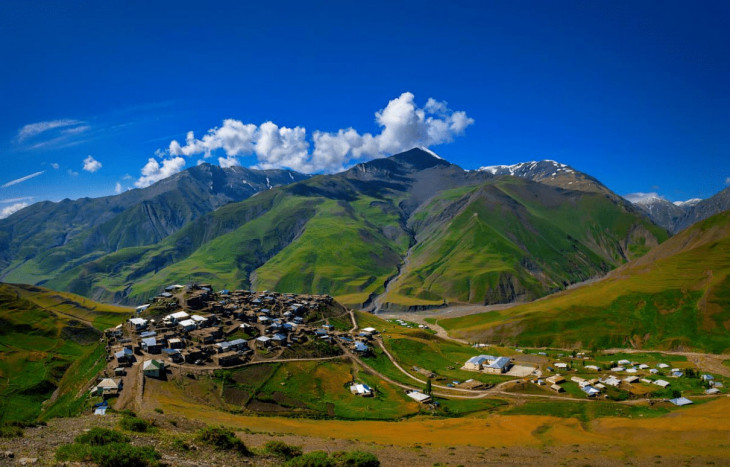
Semi-nomadism has been an integral part of the Khinalig people's culture for centuries, shaping their way of life, housing, family and communal networks, food choices, trade relations, belief system, in digenous knowledge, and traditions. The village of Khinalig is perched on a steep mountain peak, and its unique architecture adapts to the challenging terrain. Houses are constructed using local river stones and other materials, designed to accommodate livestock that stays in the village year-round. They've ingeniously developed gravity-fedirrigation systems for highlands and artificial terraces on mountain slopes to cultivate crops. The Khinalig people form a distinct ethnic group with their own language, Khinalug, which is entirely unintelligible to other languages in the Caucasus region, making it a subject of great interest to linguists and historians. Their culture, language, and belief system are deeply intertwined with their physical surroundings, giving rise to a detailed micro-toponymy system and enriching their indigenous knowledge. Khinalig is one of the rare communities preserving their traditional high-Caucasus mountain way of life. Some evidence even suggests that Khinalug is a relic language from one of the 26 ancient tribes of Caucasian Albania, dating from the 3rd century BC to the 8th century AD. Both the people and the language of Khinalug provide valuable insights into the broader historical context of high mountain living in the Caucasus and the origins of this unique culture. The Cultural Landscape of Khinalig People and the Köç Yolu Transhumance Route are proposed for the nomination for UNESCO World Heritage status under criteria (iii) and (v). Criterion (iii)1 interprets the exceptional testimony to the continuous transhumance culture of the Khinalig semi-nomadic people practiced over millennia. This is a living culture that encompasses all aspects of the ancestral vertical transhumance culture. Criterion (v)2 infers the outstanding example of land usein the site, representing the continuous semi-nomadic Khinalig culture and the ongoing human interaction with the environment. It showcases the development of a sustainable eco-social system in extreme environmental conditions, emphasizing resource sustainability and environmental respect. The nominated property includes tangible elements such as cemeteries, shrines, bridges, and springs that maintain their functional and visual integrity. Intangible elements like crafts, gastronomy, vestments, and processes related to transhumance are well-preserved. Indigenous knowledge about transhumance, seasonal plant and fruit gathering, natural resource management, and ancestral skills are passed down, ensuring the survival of semi-nomadic traditions.
1. Criterion (iii): “to bear a unique or at least exceptional testimony to a cultural tradition or to a civilization, which is living or which has disappeared”
2. Criterion (v): “to be an outstanding example of a traditional human settlement, land-use, or sea-use which is representative of a culture (or cultures), or human interaction with the environment especially when it has become vulnerable under the impact of irreversible change.”
3. The authenticity of Khinalig's traditional morphology and architecture is carefully preserved and monitored through communal management. Traditional building techniques are used in tiered houses and seasonal reconstruction of winter settlements. The newly established "Khinalig and Köç Yolu" State Historical, Cultural and Ethnographic Reserve, under the subordination of the State Tourism Agency of the Republic of Azerbaijan (4 September 2023), ensures effective national-level management. This Reserve will allocate the necessary budget for conservation and management, guaranteeing the highest level of protection for this cultural site. In summary, the nominated property is exceptional example of a continuing cultural landscape, offering valuable insights into the Khinalig semi-nomadic culture and their harmonious interaction with their environment. Their unique language, traditions, and sustainable land use practices have persisted for centuries and continue to thrive today under dedicated protection and management.
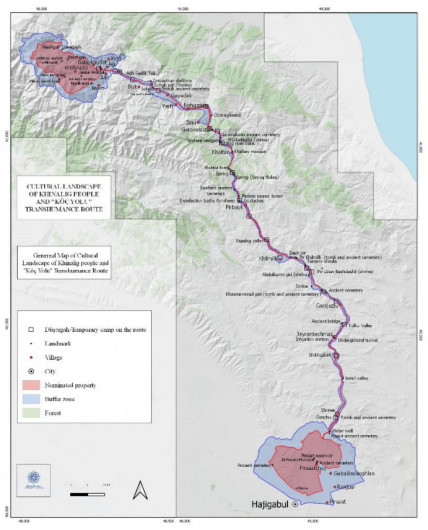
The nomination "Cultural Landscape of Khinalig People and "Köç yolu" Transhumance Route" of Azerbaijan was included in the UNESCO World Heritage List at the 45th session of the World Heritage Committee held in Riyadh, Saudi Arabia (2023).






